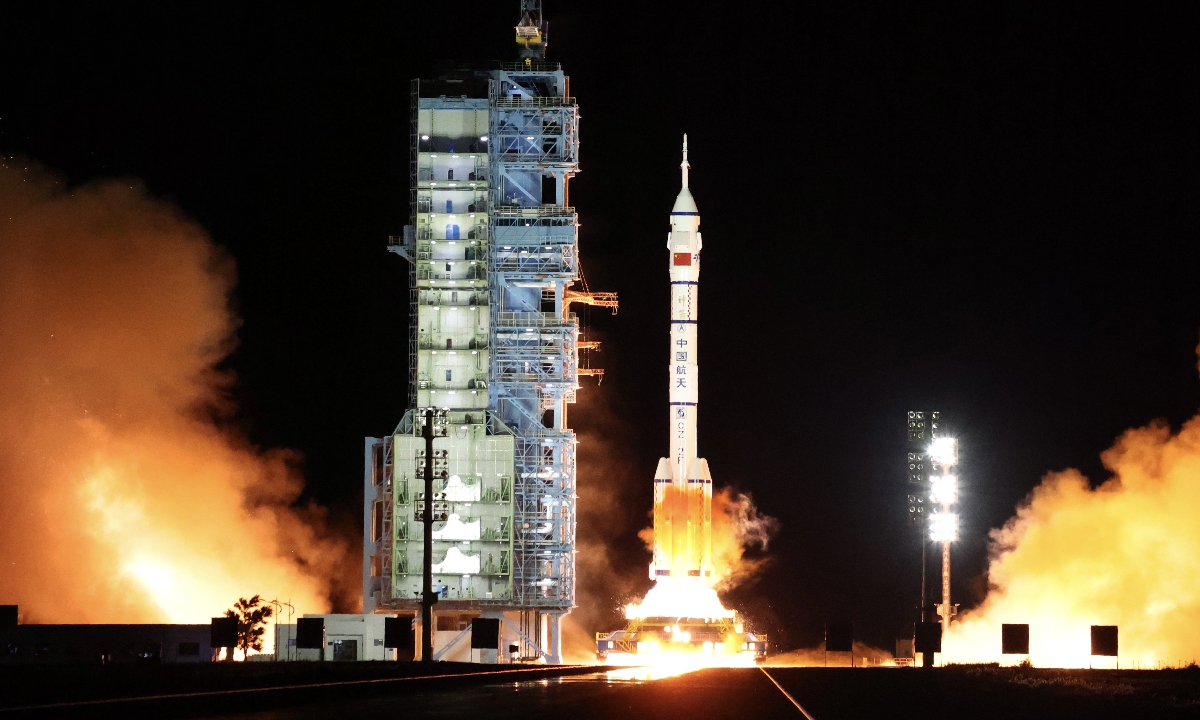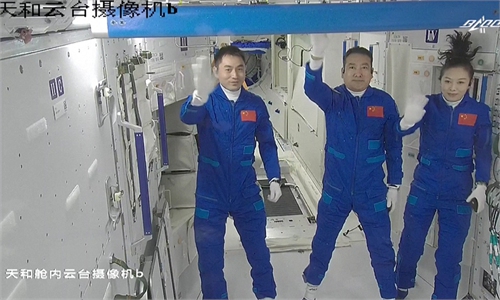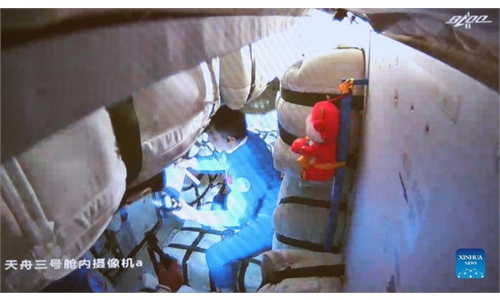SCI-TECH / AIR & SPACE
Shenzhou-14 on standby, can lift off in 8.5 days if Shenzhou-13 taikonauts need rescue

Shenzhou-13 successfully launched.Graphic:Xu Zihe/GT
Prioritizing the lives of the Shenzhou-13 crew, China has placed the Shenzhou-14 manned spacecraft and Long March-2F Y14 rocket in position for an emergency response. If an emergency occurs, the Shenzhou-14 would conduct a space rescue of the Shenzhou-13 taikonauts as soon as eight and a half days, the Global Times learned from the country's manned space project insiders on Monday.
The Shenzhou-14 spacecraft was manufactured and tested simultaneously with the freshly launched Shenzhou-13 craft. The Long March-2F Y13 successfully sent the Shenzhou-13, carrying three taikonauts, to China's Tianhe space station core module early on Saturday. The Shenzhou-14 has also completed preparations before being fueled and poised for a rescue mission in case of an emergency in orbit, the spacecraft system developer with the China Academy of Space Technology shared with the Global Times.
The China Academy of Launch Vehicle Technology, the developer of the Long March-2F rockets, told the Global Times on Monday that the series command has formulated a special list with all emergency launch personnel, and it stipulated that all liaison personnel should be in position within two hours before noticing all others within one hour after said assembly of liaison personnel.
Within 48 hours, every participant in an emergency launch should assemble and prepare, the academy said in a statement it sent to the Global Times on Monday.
It followed the "space-ground integration" mode first practiced during the Shenzhou-12 spaceflight mission, when the Shenzhou-13 craft and Long March-2F Y13 were placed in standby mode.

Shenzhou-13 Photo:Deng Xiaoci/GT
The Saturday launch set a first in the country's manned space development, as the first duo of a spacecraft-rocket combination completed the transition from emergency standby to actual mission flight mode, mission insiders told the Global Times.In a press conference before the Saturday launch of the Shenzhou-13, China's manned space authorities revealed that the Shenzhou-14 spacecraft was transferred to the Jiuquan Satellite Launch Center on August 27 with a domestically built Y-20 large transport aircraft.
"That is to say, when there is a new spacecraft going into orbit and new batch of taikonauts entering the space station, there will be a new spacecraft standing ready for emergency response. It will be the new normal," a spokesperson at the conference told the media.
Led by mission commander Zhai Zhigang, the Shenzhou-13 crew is expected to stay and work in the China's Tianhe space station core module for six months and to return to Earth in April 2022, during which Wang Yaping, will also make the first spacewalk by any woman in China's history.
Kick-starting their space life, the crew entered Tianhe on Saturday at about 9:58 am, following the spacecraft's automatic fast rendezvous and docking with the Tianhe at 6:56 am on Saturday, some six and a half hours after takeoff.




